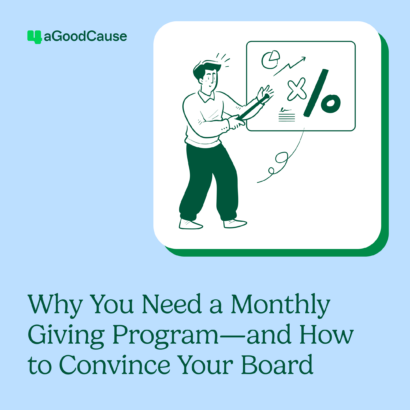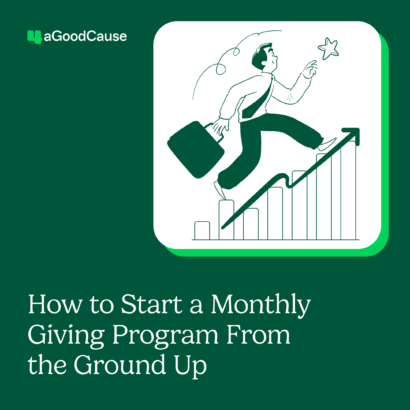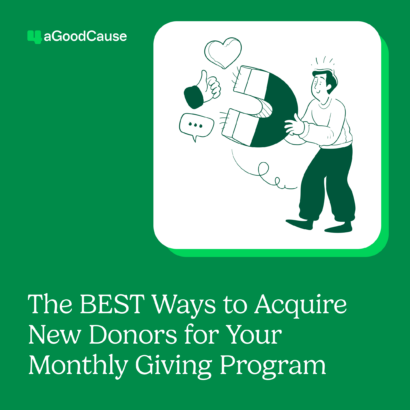The following is a guest post from Vanessa Chase Lockshin, President of The Storytelling Non-Profit, and author of The Storytelling Non-Profit: A practical guide to telling stories that raise money and awareness. We asked Vanessa to answer a series of questions to help our readers understand how nonprofits can build passionate, “in love” supporters.
Why is it important to get donors and supporters to fall in love with your cause?
The biggest reason we want donors to fall in love with a cause is loyalty. When we have their loyalty, it means that we (generally) count on them for regular donations. It also means that we don’t have to spend as much money on donor acquisition, which can be expensive. It’s a far better use of your time and resources to make sure your donors love you!
Nonprofit organizations have to do more than just tug at the heartstrings in order to grab donor’s attention and motivate them to become a part of their charity. How can a nonprofit tell stories that make a potential supporter join their cause?
Being successful at storytelling is all about knowing your audience and your message. I always like to tell people that they should never tell a story just for the sake of telling a story. I know it’s tempting to jump on the trends bandwagon, but that’s not going to set you up for long-term success.
If your organization is serious about storytelling as a long-term strategy (which is a good idea), you need to know two key pieces of information. The first is who you are communicating with. This audience is not just “prospective donors.” They are people and their demographics and psychographics will influence their giving. Start by trying to acquire more information about the audience you want to reach. The second piece of information you need is a message. A story is really just a vehicle for communicating a message, and that message gives your story a point. Think about what that one thing might be that you want people to take away from that story. Then do your best to find a story that will elevate that message.
I’ll also add that if you have the resources, it can be worthwhile to test your messages on your acquisition audience. This will help you refine your message and ultimately get to one that sticks.
Obviously, we want our donors to continue giving, but we also want them to fall in love with our cause, give more and for longer periods of time, volunteer and become an all-around passionate supporter. How can nonprofits accomplish this?
On-going communication and stewardship is key to accomplishing this!
I don’t know about you, but I have given to several organizations over the years that I genuinely loved, only to never hear from them again after I made the gift. It was a big letdown.
To avoid this, start by making a follow-up plan, which entails all the action steps you take after someone makes a gift. This may include a thank you letter, a tax receipt, a thank you phone call, or something else. From Penelope Burk’s research in Donor-Centered Fundraising, we know that donors want to know how their gift was used and what impact it had. Make sure that your content reflects this. If you find that you don’t have the bandwidth for this, enlist the help of volunteers or board members.
In addition to having a post-gift follow up plan, think about how you’ll stay in touch over the course of a year. Maybe you’ll send newsletters or email updates. Maybe you’ll encourage donors to follow you on a particular social media channel, where you plan to share frequent updates. Whatever you choose, just make sure you are consistent!
How can nonprofits make a personal connection with their donors that will really make them feel like they are a “part of the team?”
What a terrific question! This is something that every organization should be thinking about. We are all inundated with communications each day, but it’s the ones that we feel a connection to that we are most likely to remember and keep interacting with.
I think the key to this is to know your donors really well. Survey them. Get their feedback. Get to know their demographics and psychographics. Keep track of your data and your donors’ preferences. All of this information adds up to something very useful. It will help you figure out how to best make that personal connection. I recommend that people create an audience profile, which helps you distill all of the information to something useful. I have an audience profile worksheet that you can download here.
Now, I wish I could say that this is something we could all figure out overnight. The truth is that it can take some time, plus our audience is always evolving. Finding ways to continuously keep a pulse on this information is key.
It has been found that 53% of donors stop their support due to poor communication. What are some ways nonprofits can and should be maintaining communication with their supporters to keep them engaged and excited?
As I mentioned in earlier, having a plan for follow up and on-going communication is key. When we don’t have a plan, we are less likely to be consistent and more disorganized.
Some cornerstone communications that you can consider include newsletters, impact reports, videos, and social media posts.
In terms of the content of these communications, stories are the best. Not only are they more engaging that facts and statistics, they show donors’ impact in action.



